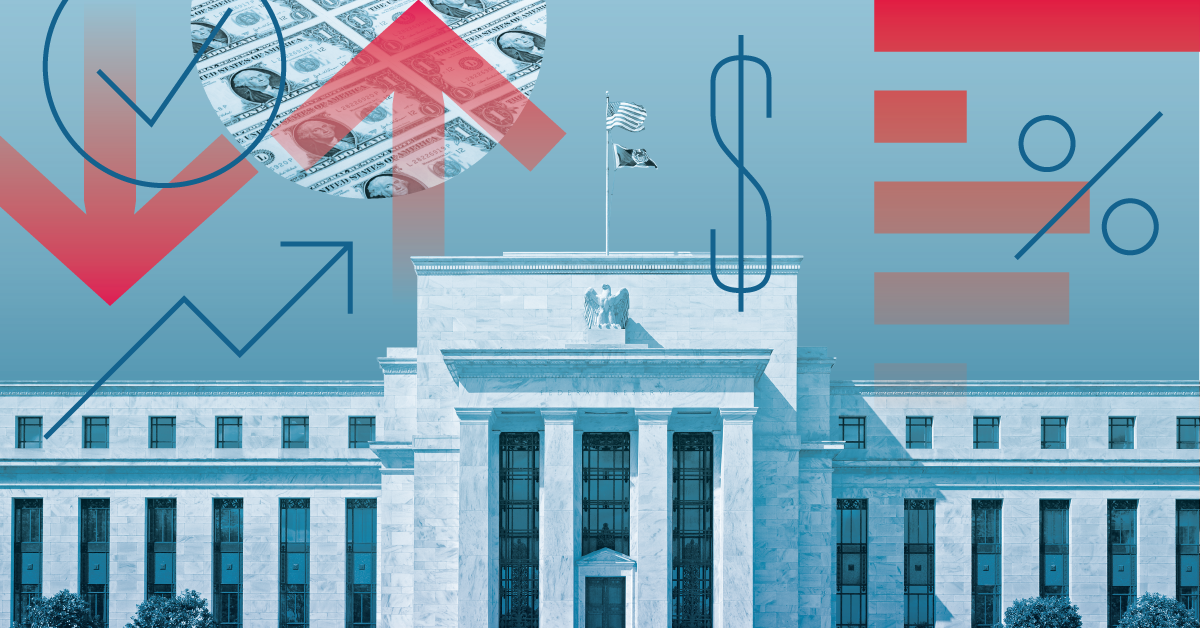Fed moves have always played a pivotal role in shaping global financial markets, but current geopolitical tensions are amplifying investor anxiety. As the Middle East conflict escalates, market participants are watching the Federal Reserve with renewed urgency, anticipating how central bank decisions might intersect with global instability.
This unfolding scenario represents a delicate balancing act between managing inflation, supporting economic growth, and responding to geopolitical shocks.
Fed Moves in Focus as Economic Uncertainty Builds
Investors are on high alert as they prepare for potential Fed moves during the next policy meeting. With inflation still above the Federal Reserve’s 2% target and the global economy facing shocks from rising energy prices and military conflict, analysts expect the Fed to weigh its options carefully.
In normal conditions, Fed moves are dictated by data trends in employment, GDP, and inflation. However, heightened risk from the Middle East conflict adds a layer of complexity that could sway monetary policy decisions.
Geopolitical Tensions Could Influence Fed Moves
The intensifying conflict in the Middle East has had immediate consequences for global oil prices and market stability. Rising crude prices increase inflationary pressures at home, potentially compelling the Fed to adopt a more hawkish stance. However, if geopolitical uncertainty triggers a flight to safety and weakens consumer confidence, the Fed may feel pressure to hold rates steady or even signal future cuts.
Fed moves in this environment are being viewed not only as a response to domestic data but also as a reaction to external volatility that could affect U.S. economic resilience.
Market Volatility Reflects Anticipation of Fed Moves
Equity markets have experienced increased volatility as investors attempt to factor in the potential outcomes of upcoming Federal Reserve moves. The S&P 500 and Nasdaq have both exhibited significant volatility in recent sessions, while the bond market reflects growing unease.
Yields on the 10-year Treasury note have fluctuated sharply, a sign that bond traders are grappling with mixed signals about inflation, recession risks, and the Fed’s likely path. In such an environment, each Fed announcement or speech by policymakers holds more weight than usual.
Inflation Remains a Central Factor in Fed Moves
Despite the geopolitical concerns, the Federal Reserve’s primary mandate remains controlling inflation. Recent CPI data showed a modest cooling in price growth, but not enough to decisively influence policy. If inflation remains sticky, future Fed moves may continue to lean toward tightening or maintaining high interest rates.
The Fed’s challenge lies in navigating between containing inflation and avoiding a policy stance that could overcorrect, especially as external risks multiply.
Investor Strategies Shift Ahead of Fed Moves
Portfolio managers and institutional investors are repositioning their assets in anticipation of near-term Federal Reserve moves. Defensive sectors, such as utilities and healthcare, are experiencing increased flows, while high-growth technology stocks are facing pressure due to their interest rate sensitivity.
Gold, typically seen as a haven, has also gained traction amid uncertainty. Meanwhile, the U.S. dollar has strengthened as global investors seek safety in American assets, reinforcing expectations that the Fed could maintain its hawkish tone.
Oil Prices and the Fed’s Inflation Calculus
The surge in oil prices resulting from the Middle East conflict may be a game-changer for upcoming Federal Reserve moves. Rising fuel costs affect not only headline inflation but also consumer spending and transportation-related businesses. If oil prices continue to increase, it could prompt the Fed to revise its inflation forecasts and policy stance.
Economists warn that sustained energy inflation could either force tighter monetary policy or compel the Fed to clearly communicate its intention to tolerate short-term price spikes in favor of long-term stability.
Global Central Banks Monitoring Fed Moves
The Federal Reserve’s decisions often influence global monetary policy. As markets await the next moves from the Fed, central banks in Europe, Asia, and emerging markets are also adjusting their strategies. A strong Fed stance could force other banks to follow suit or risk currency devaluation and capital outflows.
In particular, countries reliant on energy imports are vulnerable to both rising oil costs and tighter financial conditions, making Fed decisions a global concern, not just a domestic one.
Risk of Policy Missteps Heightens with Fed Moves
With so many variables at play, the risk of miscalculation increases. Overly aggressive Fed moves could tighten credit too quickly, triggering a recession. On the other hand, dovish inaction might allow inflation expectations to become unanchored, leading to longer-term economic pain.
The Federal Reserve faces a narrow path forward. Balancing market expectations, geopolitical risks, and domestic economic indicators will be critical to maintaining credibility and financial stability.
Earnings Season Could Influence Fed Sentiment

Corporate earnings reports arriving in the coming weeks may further shape the Fed’s outlook. If companies report substantial profits and robust demand, policymakers may feel more comfortable with higher interest rates. Conversely, signs of weakening consumer spending or declining margins could support a pause or pivot in Fed moves.
Earnings from the tech, retail, and energy sectors are expected to be significant, given their sensitivity to both inflation and geopolitical disruptions.
Long-Term Outlook for Fed Moves Amid Global Uncertainty
Looking beyond the next meeting, investors are attempting to forecast the trajectory of Fed moves into 2025. While current sentiment leans toward a prolonged period of elevated interest rates, surprises in inflation data, GDP growth, or conflict resolution could quickly change that outlook.
Some analysts predict that if the Middle East conflict is resolved swiftly, markets could stabilize, allowing the Fed to return to a more data-dependent strategy. Others warn that persistent instability may keep risk premiums high and encourage more conservative Monetary Policy moves by the Fed.
Frequently Asked Questions (FAQ’s)
What are Fed moves?
Fed moves refer to decisions made by the Federal Reserve, particularly regarding interest rates, monetary policy, and other tools used to manage inflation, employment, and economic growth.
Why are investors closely watching Fed moves right now?
Investors are closely monitoring the Fed’s moves amid rising geopolitical tensions and ongoing concerns about inflation. These factors can influence the Fed’s decisions on interest rates and monetary tightening, which directly affect financial markets.
How do Fed moves impact the stock market?
Fed moves can significantly influence the stock market. An interest rate hike can lead to lower stock prices by increasing borrowing costs, while a rate cut can boost market sentiment and stimulate growth.
Could the Middle East conflict affect Fed moves?
Yes, geopolitical instability, such as the conflict in the Middle East, can impact Fed moves by influencing oil prices, inflation expectations, and global market volatility—all key inputs in the Fed’s decision-making.
How do Fed moves affect inflation?
The Federal Reserve uses interest rate hikes to cool down inflation. By making borrowing more expensive, the Fed reduces consumer and business spending, which can help bring inflation under control.
What sectors are most sensitive to Fed moves?
Sectors such as technology, real estate, and consumer discretionary are susceptible to Federal Reserve moves. These industries often react strongly to changes in interest rates and credit availability.
Are Fed moves coordinated with other central banks?
While not always directly coordinated, central banks often closely monitor the Fed’s moves. The U.S. Federal Reserve’s policies can influence global capital flows, exchange rates, and interest rate strategies in other countries.
What should investors do ahead of Fed moves?
Investors often shift to safer assets, reassess their portfolio risk, and look for defensive sectors in anticipation of major Federal Reserve moves. Staying informed and diversifying can help manage volatility.
Conclusion
As investors await key decisions, Fed moves remain the single most significant factor shaping market sentiment. The added layer of geopolitical tension only increases the stakes. Whether the Federal Reserve opts for caution or bold action, its choices will ripple across every asset class—from equities and bonds to currencies and commodities. The coming weeks will test the Fed’s ability to navigate complex, interlinked risks. For investors, staying informed and adaptive will be critical as the landscape continues to shift.

